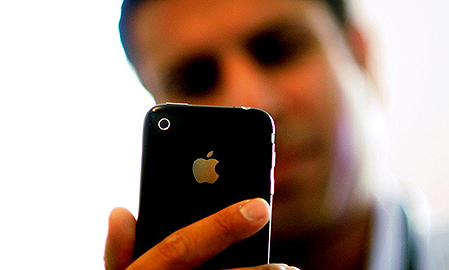A six-month diabetes management experiment that took place in Chicago’s South Side from May 2012 to February 2013 may hold the secret to chronic-care patient engagement.
The pilot project, which involved 74 insured University of Chicago employees, used mobile phones to connect patients with education and support. This may sound similar to Text4Baby, which has been praised for its ability to connect expectant mothers with prenatal-care information and advice.
But Shantanu Nudy, the lead researcher on the project, explains that this was more complex because of the personal nature of the outreach: participants determined how often they wanted to be contacted, information would flow to their phones based on their preferred schedule, and communications would then be automatically modified based on responses or lack thereof.
“The key to engagement of patients is showing them that you care. That’s the most important thing…this program wasn’t just an app,” Nudy told MM&M.
The program also looped in HCPs—responses to self-assessment questions, for example, would put messages into one of three levels of importance: a low-level need like a prescription triggered a refill request and a note to let patients know it’s been covered. A higher-level need, such as a patient response that indicates a problem like poor adherence, could prompt a call from a nurse who then funnels information to the patient’s diabetes care team.
The trial had some tangible results: a total savings of $32,388 for the six-month period. Researchers said that while prescription costs rose, visits to non-diabetes specialists dropped, as did use of emergency and outpatient services. The program was also associated with improved HbA1c levels—from an average of 7.9% before the program to an average of 7.2% after the trial. Researchers also found better glycemic control among participants who had poorly controlled diabetes, averaging an HbA1c of 10.3% before the trial and 8.5% after.
Although researchers noted that patients spend most of their lives outside of physicians’ offices, Nudy said the program is about much more than providing a portable way to check in.
“It’s all about the social connection,” he said. He also noted the text messages did not mention diabetes, and kept things general as a privacy measure. Instead, messages said things like “hey, it’s time for your medicine.”
Patients sent and received around 3.4 text messages a day, and responded to 52% of self-assessment questions. Most responded to questions within an average of 19 minutes, and this text communication created a feedback loop that translated into about six phone calls from nurses, and another two messages from nurses to HCPs about patients over the course of the study.
The response from patients to the study’s emphasis on interactive communication was largely positive: 77% said they would be willing to sign on to a program like this in the future, and 88% said knowing that a health professional was reading their messages kept them engaged.
The need to reconcile health incentives is another offshoot of the study. University researchers could not estimate the long-term savings based on the six-month trial run, but the latest numbers from the American Diabetes Association indicate what a small program like this is a stand-in for: American diabetics billed $306 billion in costs directly associated with diabetes in 2012, or 20% of overall US medical costs. The ADA also found that a diabetic’s medical costs are generally $7,900 more per year than those of non-diabetics.
“We have a really broken set of incentives that actually reward people getting sick and not getting healthy,” Nudy said, adding that a key way to change this perspective is to think, if “this is bad for the patient, maybe this is bad for the country.”
From the March 01, 2014 Issue of MM+M - Medical Marketing and Media








